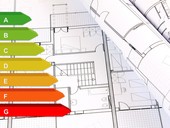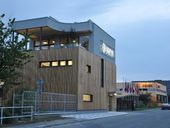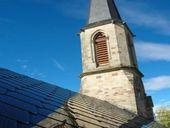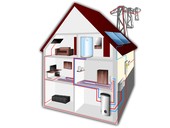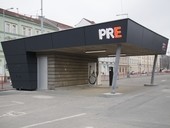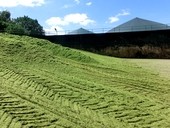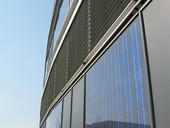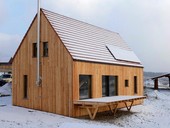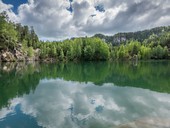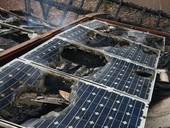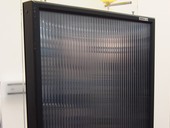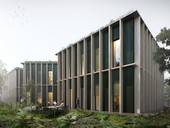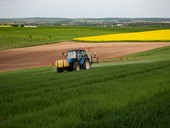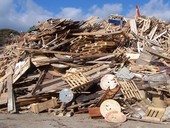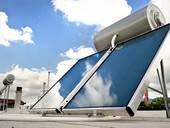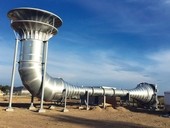The article describes basic principles of the SBToolCZ green building assessment methodology stressing its up-to-date methods for school buildings. An example of a certified school is given. Renovation of this school was assessed and optimised by the SBToolCZ system which lead to the conversion into intelligent, zero energy building.
Archiv článků od 5.3.2018 do 4.12.2018
In July 2018, a two-year monitoring of the FENIX Group a.s. in Jeseník. During this time, different battery operating modes were applied to test their capabilities to ensure the power operation of the object. This article describes the entire period in terms of energy flows in the building. The key parameters are energy consumption, supply to the grid, self-sufficiency of the building from the photovoltaic source and its local use. A number of articles have been written about the building, detailing the building and energy aspects [1, 2]. Therefore, the description of the energy economy in the building will be given only to the extent necessary for a general view of the building's energy.
Historic buildings are often classified as highly energy-intensive buildings with low energy efficiency. Thanks to their overall percentage share in the European real estate market, it is logical to focus on these objects with an innovative approach and functional, sensitively aesthetic solutions, thus significantly reducing their energy intensity and increasing their energy efficiency. At the same time, it will enable to meet the new energy targets currently proposed by the European Commission.
The methodology for determining energy-neutral or energy-zero houses is different at national levels. The interest in the realization of such houses is not only influenced by the methodology but also by the market conditions in the area of moving surplus energy production from one object to another. This is an economically disadvantageous purchase price when delivering to the network. If the existing conditions in the Czech Republic are not changed, the implementation of energy-zero houses for investors will not be interesting and the potential for reduction of CO2 production will not be utilized.
The article focuses in detail on the effect of the storage tank size on the yearly balance of the photovoltaic power plant using a 10-minute calculation step that will allow us to take a closer look at the processes associated with the production of electricity, the hot water consumption and its accumulation. The results are assessed not only from the point of view of the energy balance, but also from the point of view of economic advantage.
Unique charging station for electric vehicles was opened in february at the Prague Fair Grounds. The project combines recharging of electric vehicles with other functions: by producing their own energy using roof photovoltaics and by regulating overvoltage or undervoltage of the surrounding network using a battery system.
There is not sufficient material for agricultural biogas stations from their own activities (organic fertilizers, etc.), so it is complemented by targeted crops. In general, corn is used, but can be replaced by a feed sorrel. It has many benefits, such as lower cropping costs and long-term endurance, thus limiting soil erosion.
Innovative technologies incorporated in building constructions are able to produce renewable energy. The submitted paper deals with the current status of photovoltaic (PV) integration in building facades by selected systems. The main emphasis is focused on the newest concepts and their current development, specifically of those in combination with other progressive materials and technologies.
In contemporary architecture, straw is used marginally, mostly in do-it-yourself construction. Although the convenient qualities of straw have long been known, it has not gained the trust of builders and designers. Construction companies have not learned to work with straw on a regular basis. In the scope of green technologies, an opportunity is emerging to use straw in professional building systems suitable for sustainable architecture. If we want to apply it in our architectural designs, we have several possibilities. The common small straw bales are suitable for many ways of structure and do-it-yourself process. This way of building process can be interrupt by logistic problems or weather disaster. Contemporary building market offers professional products made of straw: universal strongly pressed boards or system of modular units for external walls. All these ways of application are able to gain the high building quality. The innovative straw technologies enable to design and erect the energy passive house with considerable percentage of straw in constructions. Although the advantages of straw are indisputable, the next success of straw building materials depends on the interest of architects and builders.
Replacing a concept “types” of the landscape by the concept “landscapes” in the content of the graphical part of the territorial development principles (ZÚR) presents a substantial change of content in the expression of conception of the regional development, because for these landscapes the target qualities including territorial conditions for their preservation or accomplishment are established in the territorial development principles (ZÚR). The original definition of the types of landscape, which divided the territory according to the characteristic features and properties, must be gradually replaced by the definition of (real) landscapes. It is a great change, because a type of landscape expresses the characteristic properties, but real landscapes in the sense of landscape itself = specific, characteristic, have substantially different sense – they express most of all individual properties of the landscape. Therefore it is necessary to describe and give reasons for importance and the method of individual (not typological) zonation of the territory of the region into landscapes (real landscapes) corresponding to the sense of the European Landscape Convention.
The issue of fires of photovoltaic power plants attracted great media attention around 2010. In terms of the total number of installations of photovoltaic power plants and the amount of electricity produced, the Czech Republic is equal to solar giants such as Germany, Italy, France. However, if we look at a comparison of photovoltaic capacities related to the population, position of the Czech Republic is not bad in the EU.
Solar air collectors can provide partial coverage of the heat demand for building heating. On the energy model of a family house, an annual heat supply for heating for different uses of air collector systems was examined. The analysis shows that, as opposed to the use of a ventilating unit with recuperation, the air solar collectors do not provide savings due to low solar gains and short operating hours in the winter. The combination of the air collectors with the regenerative unit does not bring a significant decrease in the energy requirement compared with the regenerative unit itself, as the combined efficiency of both devices is reduced.
It is expected that the new administrative centre of Lesy České republiky would be an exemplary demonstration of the use of wood, which will be used in the form of the building material or in which the importance of wood will be emphasized in another appropriate way. The paper is focused on a proposal that won the international architectural competition in 2016.
When deciding on energy investments, consultants and designers often rely on data listed in the technical data sheets provided by manufacturers. This can lead to a very unpleasant surprise for operators - fuel consumption is often significantly higher than assumed by the assessment. Especially in terms of smaller heat sources, this approach leads to errors and consequent significant economic losses.
Wood and the materials on its basis fulfil the requirements of an ever-evolving and accelerating society. In addition to naturally grown wood, wood-based materials are frequently used as a basic material for production of furniture and for building constructions as well. Looking at changes in waste management, a significant shift from the waste to the circular economy can be observed. The valuable raw materials are kept in the production cycle instead of landfilling or burning. Wood and wooden products can be efficiently separated in waste management, reused and recycled. The so-called wood waste – old furniture, wooden pallets, window and door frames, demolition wood, used lumber, bark and other wood residues can be reused in particleboard production. Particle board manufacturers in the Czech Republic have adopted progressive waste management and currently use 60% of recycled wood into particle boards. A completed life cycle analysis (LCA) of OSB demonstrates that replacing of 50% of natural fibres with recycled wood has significant environmental benefits. The objective is to push furthermore on effective legislation to promote waste material utilization and thus lead to a more sophisticated waste wood collecting.
One of the most well-known and most important greenhouse gases is carbon dioxide (CO2), which arises from natural processes, but the burning of carbonaceous fuels, especially fossil fuels, contributes significantly in the last century. This text focuses on CO2 emissions associated with energy transformations for the supply of energy to buildings.
Energy management is a generally used term under which many sub-activities are hidden. These activities should lead to an efficient energy management system and to reduce the production of greenhouse gas emissions. The energy management system is a continuous process that, when properly adjusted, leads to savings in the funds spent on consumed energy. The energy management system can be included in the Facility Management portfolio and preferably in the Property Management department.
zpět na aktuální články
